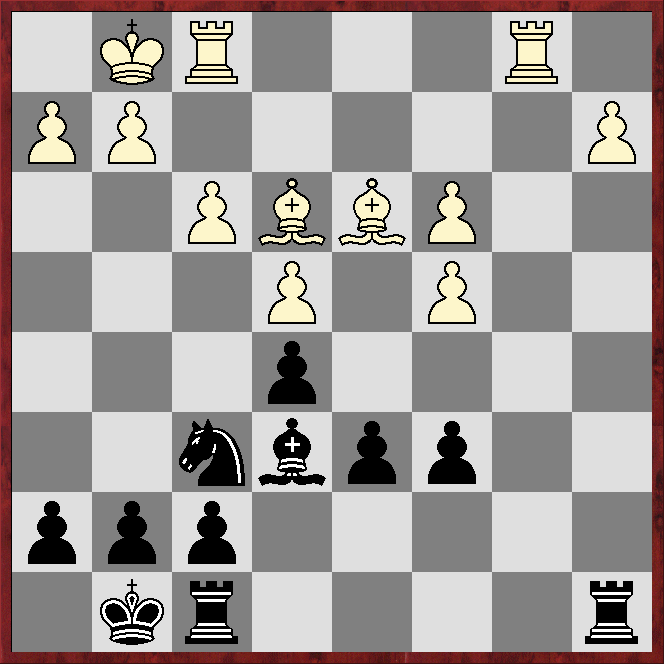Perhaps the best-known examples of this in the opening are in the Nimzo-Indian: 1.d4 Nf6 2.c4 e6 3.Nc3 Bb4 and in the the Spanish after 1.e4 e5 2.Nf3 Nc6 3.Bb5 a6.
In the latter the continuation 4.Bxc6 dxc6 is generally considered by theory to give equal chances, or even to slightly favour Black.
There are 37,733 examples of 4...dxc6 in ChessBase's 2024 Mega database, with Black scoring 48% (the alternative recapture 4...bxc6 scores just 36%).
The situation in the Nimzo-Indian is more complex.
White at some point usually plays a3, and Black usually replies ...Bxc3.
But there are lines where Black retreats the bishop, and Aron Nimzowitsch occasionally captured on c3 without being provoked by the white a pawn.
In my game from round three of the Bodensee Senioren the following position was reached with Black to make his sixth move.
 |
| Black continued with 6...Bb4, setting up the basic confrontation of the black king's bishop pinning the white queen's knight |
 |
| During the intervening period White had captured the a7 pawn, and 16...Bxc3 was played at least partly to enable Black to restore material equality |
Stockfish16 and Komodo14.1 reckon the position is equal, but, from a practical human perspective, what really counts is whether the players know how to handle their respective advantages and disadvantages.
I read somewhere - I cannot recall where - that a player needs to be 2000-strength to understand how to use the bishop-pair.
The writer was American, and I am fairly sure he was referring to US ratings, so the Fide equivalent would be around 1900.
Since my Fide is 1902, I just about qualify, and I know from experience that the more you play such positions, the less difficult they become.
Nimzowitsch in My System famously recommended heading with white for the Normal Position of the Queen's Gambit Declined, which is usually reached by 1.d4 d5 2.c4 e6 3.Nc3 Nf6 4.Nf3 c5 5.e3 Nc6, and then taking turns accepting an IQP or inflicting an IQP on Black.
He reckoned this was a sure way to increase positional understanding, and the same can be said about taking both sides of the ...Bxc3 debate.
Lesson: what really counts in bishop-pair v pawn-structure battles is knowing how to handle such an imbalance. Such knowledge, which mainly comes from experience, is also vital for knowing when it is favourable to give up the bishop-pair in such circumstances and, conversely, when there is no need to worry if an opponent has the possibility of inflicting pawn-structure damage but at the cost of the bishop-pair.
You could add the Hodgson lines of the Trompowsky from the late 1980s and early 1990s which would often start 1. d4 Nf6 2. Bg5 d5 3. Bxf6. Indeed 3. Bxf6 would also be played against most second moves by Black.
ReplyDeleteOver time though, they stopped playing an immediate Bxf6 as the lack of dark square control would sometimes be a problem later in the game.
RdC
I can remember meeting the pseudo-Tromp (1.d4 d5 2.Bg5!?) with 2...Nf6!? At first 'everyone' took the opportunity to capture on f6, but soon 'no one' did.
Delete